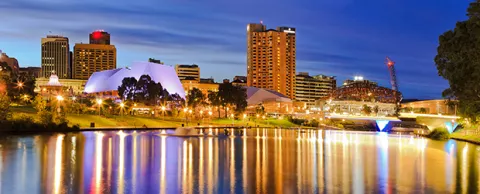
After spending time earlier this month in the Adelaide Smart City Studio with Beth Worrall, the Studio’s Manager, it was clear that smart city leadership was strong, and its goal in embracing the smart cities movement was a critical pathway to sustainability.
Further to this, I saw Councillor Houssam Abiad present at a conference last month, where he delivered a powerful presentation on the depth to which the smart cities movement has influenced the cities journey of becoming a global smart cities leader. — Adam Beck
The South Australian city of Adelaide plans to become the country’s first true smart city and its early success offers a roadmap for others to follow. Here are a few ideas worth stealing:
Be open to ideas from elsewhere
Council Lead Partner Cisco named Adelaide a “Lighthouse City,” the first Australian city to win that designation. That puts Adelaide on par with cities like Barcelona and Dubai. And it is taking advantage of that label.
It is partnering with the Indian city of Jaipur, which is also a Lighthouse City, to share results and best practices. Both cities will get to learn from each other, allowing each to advance faster than they could on their own.
Make innovation a priority
Adelaide has created its own Innovation Lab to encourage the development of technologies and ideas that could help its smart cities journey. And it’s not just about developing technology; it’s also about bringing the community together.
The Innovation Lab is open to the entire community and the idea is to turn it into a social network of sorts. Everyone from tech entrepreneurs to students are encouraged to visit the lab to see the work of others hands-on.
Care about the environment
Energy efficiency is a key goal for the city and its environmental drive is one of the core components of its plan to become one of the world’s most livable cities.
It is starting with its own facilities. Two city buildings have already been retrofitted with solar panels and battery storage, reducing its environmental impact while cutting costs by $100,000 annually.
It’s also encouraging the public to follow suit. It established a grant program that covers half the cost of green projects. Both residents and businesses are eligible.



